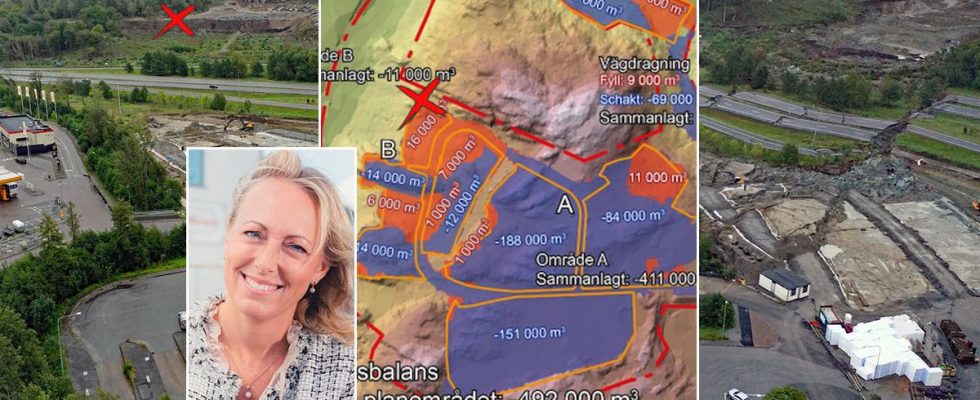Updated 12:11 | Posted 12:03 p.m
The owner of the company that is singled out for having “full tipped” excavation masses that caused the landslide at E6 in Stenungsund speaks out:
– Our opinion is that we built according to the building permit and detailed plan, says Åsa Norberg, who was questioned by the police on Saturday.
But she cannot report how much excavated material has been dumped at the site.
Yesterday, Aftonbladet was able to present information that 50,000 cubic meters of excavated material was wrongly placed next to the highway in connection with the construction of a business park, and that it may have caused the landslide on the E6.
But Åsa Norberg, owner of Badhustorget Privatbostäder and Hammar Företagspark, which exploits the land next to the highway, denies that anything wrong happened:
– Our opinion is that we built according to the building permit and detailed plan. Then the investigation will have to show something else, if that were to be the case, she tells Aftonbladet.
According to our information, you were given permission to build a noise wall to the east towards the motocross track, but instead you placed 50,000 cubic meters of excavated material on the highway?
– There is land permission for a noise barrier towards the motocross track, and we have built a noise barrier there. And there is a land license for the plots along the area where the landslide is. In both areas, we have worked with excavated material.
According to the investigation and the maps in the detailed plan, you can put 30,000 cubic meters of excavated material in the area closest to the highway. How much have you invested there?
– I have no exact information on how much we put there. We’ll have to look into that. Since you can only load with a certain height – 2.5 meters on some parts and more on other parts – we haven’t had time to calculate it exactly.
– But there is clear information on how much you can burden the land. If there are mountains, you have to load in a different way, says Norberg.
What do you think about the damage caused by the landslide?
– Now we don’t know exactly what caused what, so we have to wait for the investigation. But everything that has happened all around is incredibly tragic. We are very grateful that there are no serious injuries, says Norberg.
During Saturday, the police began a preliminary investigation regarding gross devastation, including to see if there are connections between the construction of the business park and the landslide.
full screen
Next
Åsa Norberg’s company owns the land next to the highway, where a business park is currently being built.
1 / 2Photo: Badhustorget Private residences
Åsa Norberg says that she was questioned by the police on Saturday, but that she was not informed of any criminal suspicion:
– We have had a conversation with them, it is quite natural in this situation.
What is their theory about what caused the landslide?
– They had no theory so far, nothing that they told us anyway.
Did the police have no idea what could have caused the landslide?
– Nothing that they shared with us anyway, says Åsa Norberg to Aftonbladet.
Rain and mud
The presence of quick clay in the ground makes Västra Götaland the country’s most landslide-prone area. Lars-Ove Westerberg, natural geographer and university lecturer at Stockholm University, is not surprised by the landslide in Stenungsund.
– I thought “well, there it is”, he said to Aftonbladet yesterday Saturday.
– It is a strange type of soil that is quite stable if it is not exposed to vibrations or a lot of water, Westerberg continues.
It was raining at the time of the landslide, which increases the risk of landslides. But according to SMHI, there have been no extreme amounts of rain recently.
During September this year, the nearest measuring station in Röra strand received a total of 89 millimeters, compared to 80 millimeters which is the normal for the whole of September. But this summer, all the more rain fell.
– If you look at the whole summer, it was very wet especially in July, but also in August there was a lot of rain, says Linnea Rehn Wittskog, meteorologist at SMHI to TT.
full screen
Next
In the business park, 30,000 cubic meters of excavated material may be placed next to the highway, according to the detailed plan.
1 / 2Photo: Stenungsund Municipality
